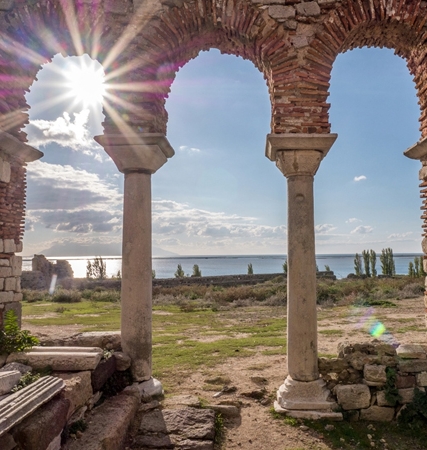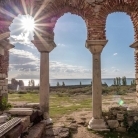Enez Castle, which was on a high hill called Acropolis in Antiquity, was built to prevent barbarian raids from the Balkans. Although the construction date of the castle is not certain, the spolia building materials on the walls indicate that it was built before Byzantium. It is mentioned in the sources that Lustinianus, one of the Eastern Roman Emperors in the VI century AD, gave instructions to repair the castle.
The castle extends in northwest and south-east directions. The main entrance is in the northeast direction. There are two fortification walls extending from the castle to the sea, protecting the harbour on the sea side of the castle. Large angular bastions were built on the sea side of the walls, but only the western bastion has survived to the present day. The western wall was orientated in such a way that it could also see the Meriç River, thus taking precautions against attacks from the river.
The building material of the castle, which was repaired in the XIIth century, consists of cut stone, brick and ancient architectural pieces. Inside the castle there is the Hagia Sophia of Enez, the symbol of Enez, a small church with a mosaic floor and a cave used as a chapel. A relief depicting Pan and the dancing nymphs of Greek Mythology on the walls of the cave was taken to the Edirne Museum.
There is also a white marble depiction of a Thracian cavalryman on the wall next to the monumental entrance gate of the castle. In addition, the pointed Ottoman arch inside the castle indicates that the structure was used by the Turks.


















